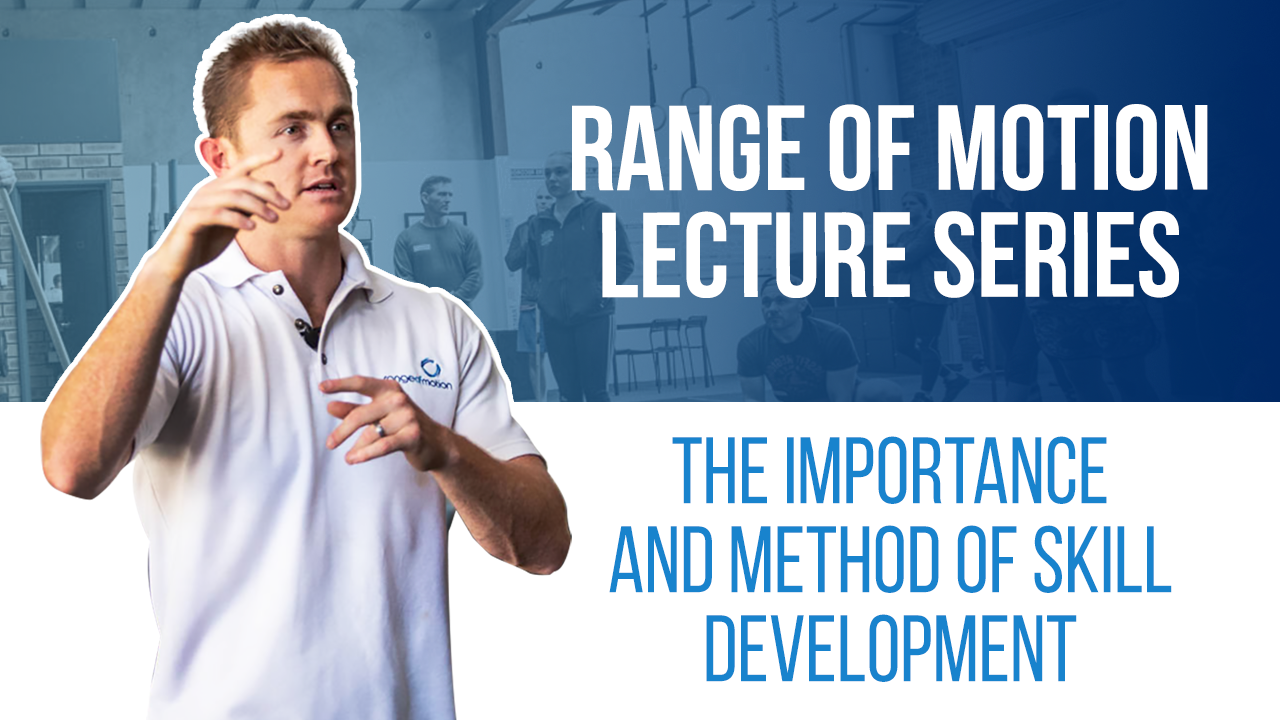Transcribed from video:
– [Dan] How do we develop skill? So, skill and training. I would categorise the movements you improve into two areas. We talk about trainable weaknesses and we talk about practicable weaknesses. Weaknesses that are trainable are things that you get better at by lifting heavy, by breathing hard, by providing a stimulus to your body that your body has to then adapt to. These are things that can be trained. If you lift heavy, you’ll get better at lifting heavy. If you do high-rep stamina work, you’ll get better at high-rep stamina work. If you breathe heavy, you’ll get better at breathing heavy and trying to oxygenate your muscles. Skill and practise, on the other hand, these are things best done not under intensity. Intensity is a trainable stuff. Your practise is best done not under intensity. So if you’re trying to get a butterfly pullup, the best time is not when you’re breathing hard after a set of 21 thrusters. The best time is when you’re fresh, you can play with the movement, unstructured play with that movement and you’re trying to do two and then you have a break. You maybe watch the video, you break it down you look at what you’re doing. So we can insert practise sessions into this template, into this 19, maybe we say, “Alright, we’re going to take it from 19 to 24, and we’re going to insert five practise sessions in here as well.” We’re identifying the movements, the skills you’re weakest at. Things like pistols or butterfly pullups or handstands, things that require you to have the skill. It’s not that you don’t have the strength to do a butterfly pullup, it’s that you don’t have the skill to do a butterfly pullup. Everyone here is strong enough to hold a free-standing handstand. Everyone here has that strength. You don’t have the skill, so you will insert some skill session-type training into you’re programme as well, through slow, deliberate practise.





